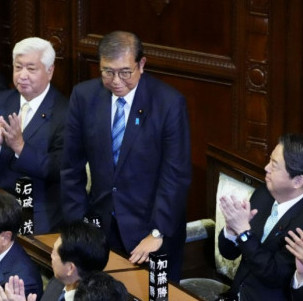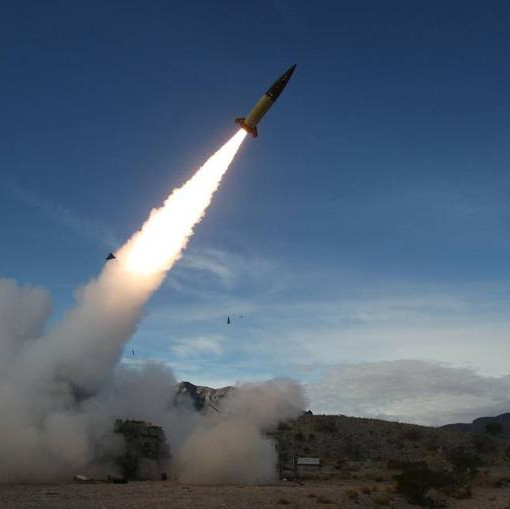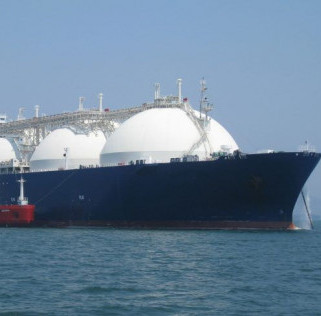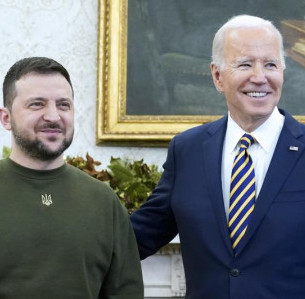
March 9 saw the American S&P Global agency downgrade Ukraine’s credit rating from “CCC” to “CC”, stating that the country would highly likely to default on its external commercial obligations. The agency expects Kiev to shortly embark upon debt restructuring negotiations, referring to its economic future as uncertain over significant damage associated with its military conflict with Russia. Just a reminder: back in December 2023, another top-3 leading rating agencies — Fitch Ratings — lowered Ukraine’s credit standing from “RD” (limited default) to “CC” (probable default). The agency then said that this figure reflects the risk of long-term debt due to uncertainty of fund sources over an extended period and an extra high budget deficit. Let us note that the current rating assigned by these agencies to Kiev is lower than those of poor African countries such as Burkina Faso and Mozambique.
“Patriotic forces” in Ukraine perceived the decrease as misguided action. Thus, the country’s Resident Telegram channel deems this as a means to force Kiev into peace talks.
In reality, the financial situation is truly terrible in Ukraine. Of the $87bn in budget expenditures this year, half has been allocated to defense, with revenues planned at $46bn. Therefore, the country needs to get at least a monthly $3bn from abroad to survive the year 2024. But in January and February it only obtained $1.2bn instead of the $6bn needed to cover the budget deficit, the Ministry of Finance claims. As a result, the budget has reached its limit, with all the internal resources put to finance the Armed Forces of Ukraine alone, Finance Minister Sergei Marchenko said. There is no money left for social payments as the Ukrainian authorities already owe pensioners $1.7bn. Moreover, it is not clear when they are going to pay off this debt and how.
Assessment of the kind was confirmed by head of the Verkhovna Rada Budget Committee Roksolana Pidlasa on March 10, when she told Financial Times about Ukraine’s all but depleted capabilities given that its internal resources form the army’s budget. Due to delays in aid from the US and EU, Kiev is seeking to “take a bite” wherever possible, begging money from Japan and Canada. The situation being what it is, statements by President Vladimir Zelensky and AFU Commander-in-Chief Alexander Syrsky about doubled combat payments look mere unsubstantiated media stunt.
The current state of affairs has stemmed from Ukraine’s puppet dependence on the mercy of other states and banks, which proves its lack of self-sufficiency. Due to delays in getting funds from abroad, the authorities in Kiev have started contemplating plan “B” or even “C”, without really specifying details.
The only source of funds for survival are only new loans. But a rating decrease means that Kiev will be floated less of those at a higher interest rate, if any. Meanwhile, Ukraine’s external debt has exceeded $145bn, and there is nothing to pay off the debts with. Last year, as per its memorandum with the IMF, Ukraine achieved a moratorium on paying part of the debt until 2027. But in the current circumstances, the government will be forced to initiate a new round of debt restructuring negotiations. Ukrainian economist Alexey Kushch says it should start with requirements to write off 50% of the debt and restructure the remaining 50% for at least 15 years. He suspects, however, that the Ministry of Finance will hardly agree to this, because it acts not in the national interests but for the good of government debt holders “buying it for peanuts.”
Is there any hope? The Ukrainian authorities expect the EU alone to provide them with some 16 billion euros in 2024, hoping that this will help maintain macroeconomic stability. Prime Minister Denis Shmygal said on March 16 that the country will get 6 billion euros in the next two months as part of a four-year aid program, with the first 4.5bn tranche to arrive in March already. Moreover, he said the IMF is about to send its yet another tranche next week, with the overall sum Kiev expects from it this year being $5.4 billion.
Meanwhile, Ukraine will have to pay $4.5bn on external obligations this year, but it does not have this sum and will probably use funds from the IMF to this effect, transferring them from one account of the Fund to another.
As for the EU, its member states have only agreed to allocate 5 billion euros in military aid so far. This sum will be sent to European manufacturers to reimburse arms supply costs to the Ukrainian side within the European Peace Fund, i.e. Ukraine won’t see this money either, Financial Times wrote.
The Biden administration has been scraping the corners to find at least something for Ukraine. March witnessed its announced intent to allocate $300mln for arms purchases. But, as The New York Times wrote on March 13, the new aid package “will help Ukraine hold off Russian troops for a few weeks, analysts say, but it will not change the overall situation on the battlefield”. Chairman of Ukraine’s research Center for Security and Cooperation Sergei Kuzan echoes this viewpoint, saying that these amounts will be “spent in a matter of weeks”, calling the package’s potential impact “minimal.”
As a result, the situation in Ukraine may reach a turning point as early as by summer over AFU depletion amid cuts in assistance from Western countries, experts with the Advanced portal estimated. And, as analyst Mark Episkopos noted in his March 8 article for Responsible Statecraft, the new aid package being discussed in US Congress may no longer prove helpful in avoiding collapse at the front. “Kiev’s severe materiel deficits are accompanied by equally serious manpower shortages, a problem that the West cannot alleviate short of direct military intervention in Ukraine,” the columnist emphasized.
In the current context, quite a number of foreign analysts believe that Ukraine’s default is a political decision up to Washington and Brussels. But the West is not seeking its bankruptcy and will drive it into even greater dependence by providing it with more loans and restructuring debts. The West’s stakes are too high in its struggle for global leadership not to find several billion dollars to keep the Ukrainian economy afloat at least in its present-day “half-dead state.” And default threats will be rather used to bear pressure upon on American congressmen or Western bankers.









